Part One
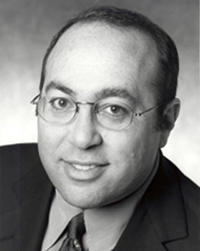
What was the very first
project you worked on with Barbra and how did it come about?
The first project I worked directly with her on was the compilation, “A
Collection…Greatest Hits and More.”
Had you known Barbra before working with her?
I knew her a little bit. We met through Charles Koppelman, who as some of
your readers may know, was her Executive Producer at the time. I was an
independent music publisher, and Charles asked me to find some material for
a compilation he was working on with her, which became “Memories”. (I think
it was called “Love Songs” in the UK.) So I brought her “Comin’ In And Out
Of Your Life,” which was a song I’d come across a few months earlier. That
was my first association with her. Then she recorded a few other songs I
published or found for her. A few years later, when she was making the “Till
I Loved You” record, I was working at Columbia Records, and she really was
on her own, meaning no one from the label was helping her find material. She
needed a few songs to complete the album. Since I’d met her a few years
before, I took the initiative to collect some songs I thought she might
respond to. I called Marty Erlichman to see if she’d be open to hearing
them.

Marty Erlichman, Barbra's manager…
I liked him right away; he was very smart…and so dedicated to nurturing and
protecting Barbra’s artistry. It took a while to set up the meeting, but
once we were finally face to face, we sort of clicked. She’s a very
intuitive person, and I think she knew right away that I was there to
help…and that I genuinely appreciated what she was creatively going for.
How is Barbra different in person than what we see on film and in
concert?
When you go to one of her movies or concerts, you’re experiencing the
finished product. What I’ve been able to witness for the past 15 years is
her “process,” which is both remarkable and thrilling. As great an artist as
she is on the screen or stage or CD, when you’ve got the kind of front row
seat I’ve been so fortunate to occupy -- sitting in on rehearsals and
recording sessions -- you really get to see her essence, and, I think, her
genius. She is very focused, but at the same time, she’s very sweet,
thoughtful, generous, funny and interesting. Usually when I read stories
about her, they talk about her so-called “perfectionism,” as though it was a
negative quality. Personally, I think it’s just the opposite.
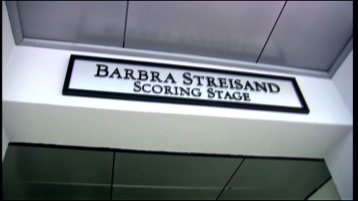
Were you a fan before you knew her?
[Yes] I was a fan. I was very moved by her voice, and especially by the
broad range of material she chose to record. Not only the “hits,” but also
the album cuts that really show the eclectic and broad taste she has in
music. You knew she wasn’t phoning it in, or chasing commercial success for
its own sake.
How do you approach doing liner notes for a Barbra CD?
Basically, I want to share with the listener what it was like to be at the
session; it’s really that simple. Shedding light on the brilliance of her
process, hopefully, enhances the enjoyment of the music. Growing up in the
1960s, I bought tons of records, and I really appreciated good liner notes.
There were three guys whose writing shows up on some of my favourite albums,
and whose writing style I really admired. Their names are probably
unfamiliar to most, but Andy Wickham, Stan Cornyn and Derek Taylor were the
major album sleeve writers who, in my opinion, captured the flavor of the
artists they were working with. For me, they elevated and informed the
listening experience, by describing in facts and in more cerebral,
impressionistic ways, what the artist and the music was like.
Andy Wickham wrote a lot of notes for West-Coast artists like The Mamas and
The Papas. He had a fragmented, trippy, poetic style that perfectly captured
the flower-power personalities of the group. Stan Cornyn wrote the liner
notes for Sinatra’s albums. They’re remarkable “behind-the-scenes” essays,
which portray the Rat Pack, jet-set life-style Sinatra led (at the time).
When you read his notes, you can practically hear the ice-cubes clinking in
the scotch glasses...like you’re practically sitting in on the sessions.
Derek was the spokesperson, publicist and liner note writer for The Beatles
and later The Byrds. He was able to capture the insanity of Beatlemania, and
the the group’s evolving artistry, with the passion of a fan, and the keen
eye of a pop culture philosopher.
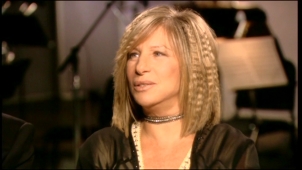
What has been your favourite Barbra project -- and why?
Each one has been a fantastic, intense and rewarding experience in its own
way. “Just For The Record” gave me a chance to look through her archives and
re-visit many aspects of her artistic accomplishments that were before my
time. (One day, it would be great to expand the box set with even more of
the material we simply couldn’t fit onto the four discs.) “Higher Ground”
was a very emotional album. “A Love Like Ours” was a very happy recording
session, because she had just gotten married to Jim and was in such a great
frame of mind. Working on “Barbra: The Concert” and “Timeless” were also
exciting in their own ways. She performs live so infrequently that it was
just mind-blowing to be at all the rehearsals, and hear all those great
songs come to life again.
Part Two
Barbra once thanked you
for all the late night phone calls. What's that all about?
Barbra usually starts recording at 3 or 4 in the afternoon. She’s already
put in a full day by then, with the dozen other projects she’s usually
working on...but somehow she keeps going! We often stay in the studio till 1
or 2 in the morning. Then when I’m driving home, the cell phone will ring
and she’ll have a few more ideas she’s just thought of, so that’s what she
meant. When you’re assisting her on a project, you can forget about “early
to bed, early to rise!” Making a record is a process, and as much as you try
to plan exactly how it will unfold, it’s a very fluid situation. Barbra is
not only the singer, she’s usually the producer and even though she doesn’t
take credit for the arrangements of her recordings, she could because she’s
very involved in every note. She’s constantly coming up with new musical
ideas, and it’s my job to help her realize them as seamlessly as possible.
If she gets an idea she wants to bounce off me, I’m available; it doesn’t
matter what time of day or night it is. It’s better to hear the idea when
it’s fresh.
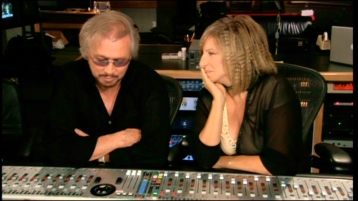
What was it like leading up to “The Concert” in 1993 in Las Vegas? What
was the atmosphere? Was it different in 1999 with “Timeless”?
Both were very intense, challenging to coordinate, and absolutely thrilling
to be a part of. “The Concert” was unique, because she hadn’t performed live
in years (outside of a few benefit shows). Barbra worked with the Bergmans
on the book, and Marvin Hamlisch was also very involved, and we all (Barbra,
Marilyn & Alan, Marty and I) had a hand in selecting the songs. She was
nervous, because she really hadn’t put on a full show of this magnitude, and
she’d developed a kind of stage fright. It was very courageous of her to
overcome that! Imagine if you don’t like flying, but you get on the airplane
anyway. It was almost like that. The show itself was complex, with videos,
lighting design, a large orchestra and different sets. So getting it right
was essential. The show had a lot of substance and a lot of heart, and was
just an honor to be a small part of. For the record, my favorite moment
every night was when she sang “Lazy Afternoon.” It was probably the least
known song of the entire show, but I just loved her singing, and how she’d
staged it.
And “Timeless”?
“Timeless” was less tense, insofar as Barbra was more relaxed about
performing in front of large audiences, but it was also a huge creative
undertaking to make it original and unique, and not just a copy of “The
Concert.” You just can’t believe the amount of work she put into those
shows.
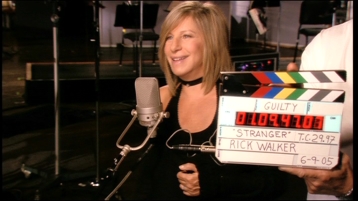
What can you tell us about the Streisand TV specials coming out in
November? You’re doing the liner notes, right?
The shows are spectacular. If you haven’t seen them before, there’s just
nothing that can prepare you for how great they are. I wrote the notes with
my friend Richard Jay-Alexander, who worked with Barbra on the final
“Timeless” concerts. We wrote “The Movie Album” notes together. We’ve tried
to put each show into context, provide a little background about Barbra’s
life and career to those who might not be completely familiar with this
period of her life; and for the diehard fans, we’ve tried to fill in a few
of the blanks with interesting details. We’ve also tried to correct some of
the factual errors that a lot of the bios of Barbra get wrong. Of course,
writing liner notes is a very subjective endeavor, but we hope they’ll make
the viewing experience that much more satisfying. The shows are simply
brilliant, and I’m glad they’re finally out on DVD. Everyone knows that “My
Name Is Barbra” and “Color Me Barbra” are classics, but wait till you see
“Barbra Streisand…and Other Musical Instruments.” It was so ahead of its
time; and it’s aged remarkably well. Her duet with Ray Charles is priceless.
You’re basically there for the entire length of making an album. Just how
stressful or exciting can it be for you? Does the “I’m working with Barbra
Streisand” thoughts quickly exit, or are you always aware?
It’s stressful, but not a bad kind of stress. It’s exciting, because there’s
always the potential that any given project, or any specific vocal take,
will be one for the ages. I’ve had the privilege of working with many great
artists, but I have to say that working with Barbra is the most energizing,
because she’s such a spectacular artist, and even after all these years,
she’s so creatively free, and she hears music in such a deep way. People
don’t usually refer to her as a musician, but she really is a very great
musician. So as much as it’s hard work, it’s also a pleasure for me to help
her move in any creative direction she cares to go in. Barbra is so
down-to-earth, that in the day-to-day of it all, you don’t have time to be
star-struck. Although, I have to say that when she finally steps up to the
microphone to sing, I do have to sort of pinch myself. Her voice is so
quintessential, that you can’t help but be moved and astonished, no matter
how many times you’ve been in the studio with her.
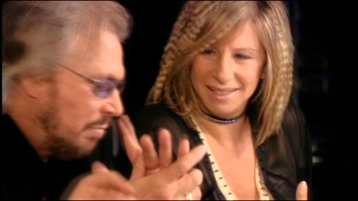
Barbra knows exactly what she wants, but she also loves to collaborate,
right? She likes to hear an opinion from different people?
Barbra is remarkably open to good suggestions, as long as she doesn’t feel
she’s being manipulated or thrown off the scent of what she knows she wants.
She’s very passionate about her feelings and opinions, but she’s equally
willing to explore other people’s ideas. She likes having colleagues around
her who aren’t just “yes-men.” She really encourages honesty, because she’s
so completely honest herself. Some artists I’ve worked with really just want
their egos stroked. Barbra wants her team to act as sounding boards for her
ideas.
She might not remember it, but one of the first times we met, there were a
bunch of people sitting around having dinner and discussing a recent
Broadway musical. Everyone had seen the show, and the way Barbra asked the
question, it seemed like she wanted everyone to say how much they liked it.
I didn’t know her all that well, so I didn’t say anything one way or
another...I just keep my opinion to myself. Then Barbra looked at me and
said, “What did you think, Jay?” I responded that it was clear audiences
were loving the show, but that I just wasn’t that crazy about it! When I
said this, a slight hush fell over the table; a dissenting voice! Then
Barbra said, “That’s why I like this guy; he’s not afraid to speak his
mind…I didn’t like the show either!” Then everyone who said they’d liked the
show started to back-pedal a bit. It was a good illustration of how it can
be difficult to be so famous and still get honest reactions from people.
Still, you’ve got to want to hear the truth…and that’s what she’s seeking.
She may not always agree, but she welcomes the exchange of ideas.
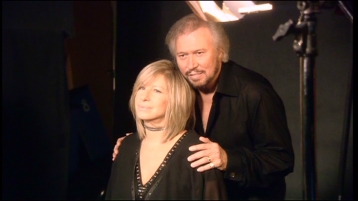
Barbra sounds remarkably relaxed and happy on these new songs -- the four
that have been previewed on Amazon.com -- why do you think she's still able
to capture that magic?
I agree with you, she does sound relaxed and happy. Barry Gibb recorded the
basic tracks in Miami (just as he’d done with “Guilty”) so a great deal of
the pressure she usually takes on was lifted from her shoulders. The
material is lighter, insofar as it’s more rhythmic and less orchestrated, so
that gives it a more breezy quality. As to why she’s able to capture the
magic and remain, year after year, one of the few artists of her generation
to remain relevant in today’s music world, there are a hundred reasons. I
think it’s the same reason why the Miles Davis, Billie Holiday, Leonard
Bernstein, Bob Dylan, Frank Sinatra, Maria Callas or The Beatles recordings
are as vital today as when they were first released -- they’re geniuses!
It’s such an overused word, but in Barbra’s case, it’s applicable
BarbraNews.com would like to thank Jay Landers for making this interview possible.
